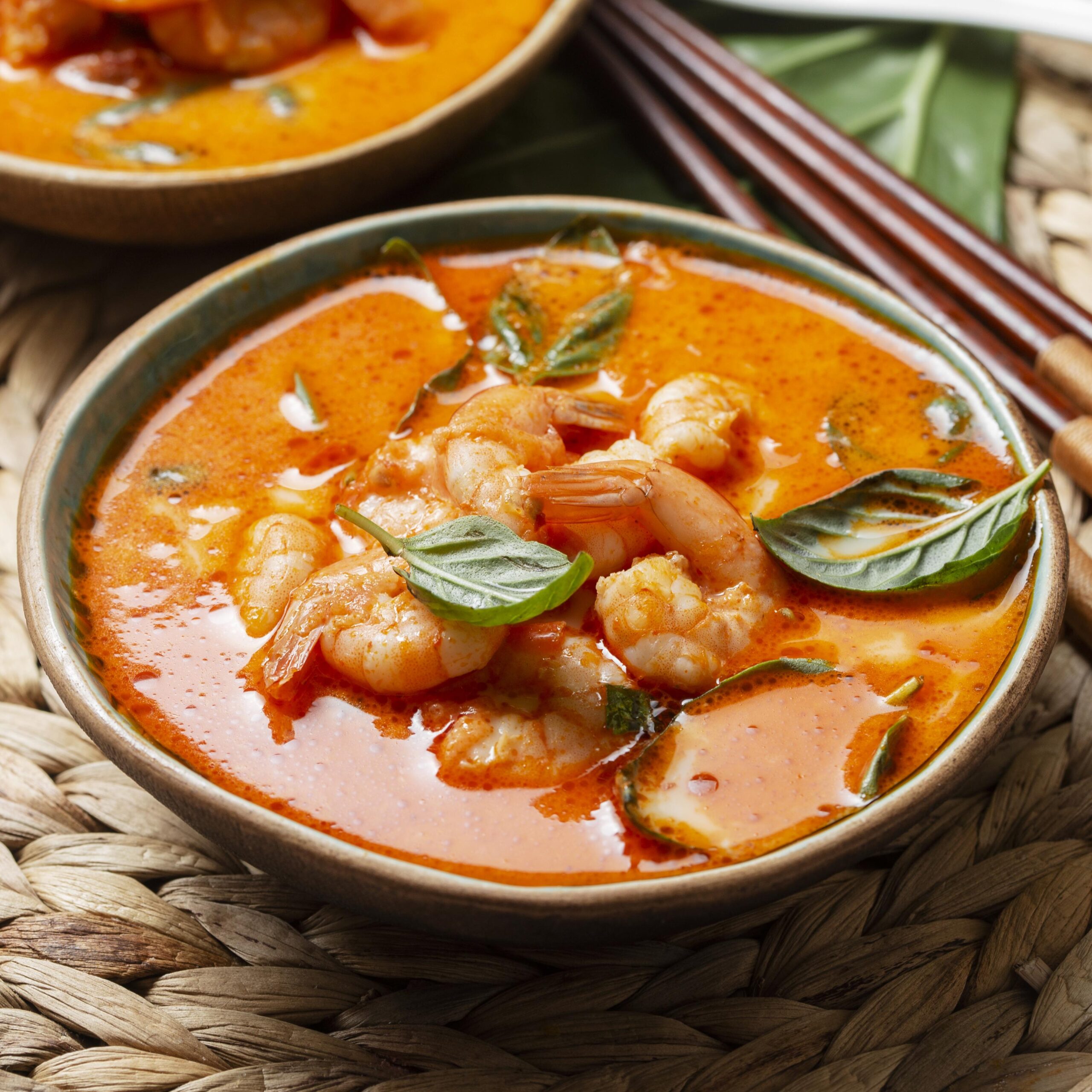Kerala’s coastal cuisine offers some of the most flavorful seafood dishes, and Nadan Chemmeen Curry stands out as a true favorite. This traditional Kerala prawns curry uses freshly ground coconut paste instead of coconut milk, giving it a rich and earthy flavor. First, the spices are sautéed in fragrant coconut oil, and then juicy prawns are gently simmered in a tamarind-based gravy. As a result, every bite is packed with warmth and coastal charm. Whether you’re serving it with Kerala matta rice or boiled tapioca (kappa), this dish brings the taste of home-cooked comfort to your table.
🍽 Serves: 3–4
⏱ Prep Time: 15 mins | Cook Time: 25 mins
🧂 Ingredients:
For the curry:
- Prawns (Chemmeen) – 500g, cleaned and deveined
- Shallots – 10–12 (or 1 medium onion), thinly sliced
- Garlic – 6 cloves, crushed
- Ginger – 1-inch piece, chopped
- Green chilies – 2, slit
- Tomato – 1 medium, chopped
- Curry leaves – 2 sprigs
- Tamarind – small lemon-sized piece (soaked in ½ cup warm water and extracted)
- Coconut oil – 2 tbsp
- Salt – to taste
Spice powders:
- Turmeric powder – ¼ tsp
- Red chili powder – 1½ tsp
- Coriander powder – 1½ tbsp
- Fenugreek seeds (uluva) – ¼ tsp
For coconut paste:
- Grated coconut – ¾ cup
- Shallots – 2
- Cumin seeds – ½ tsp (optional)
- Water – as needed to grind
👩🍳 Instructions:
- Grind the coconut paste:
- Grind grated coconut with shallots and cumin seeds to a smooth paste. Use just enough water to blend it.
- Start the curry base:
- Heat coconut oil in a clay pot (manchatti) or deep pan.
- Add fenugreek seeds and let them splutter.
- Add chopped shallots, ginger, garlic, green chilies, and curry leaves.
- Sauté until the shallots turn light brown.
- Add the spice powders:
- Add turmeric, chili, and coriander powders.
- Fry on low heat until raw smell goes away and the masala becomes aromatic.
- Add tomato and cook until it softens.
- Pour in tamarind water and salt. Let it boil for 5–7 minutes until raw smell goes and it slightly thickens.
- Add prawns and cook for 5–6 minutes until they just turn pink.
- Add the ground coconut paste, mix well, and cook on low flame for another 4–5 minutes until the gravy is well combined and slightly thick.
- Do not let it boil too much after adding the coconut paste to avoid splitting. Switch off and let it rest with the lid closed.
- Finish with a drizzle of coconut oil and fresh curry leaves on top.
🍛 Serve with:
- Kerala Matta Rice
- Kappa (boiled tapioca)
- Appam or Pathiri
Conclusion
This Kerala prawns curry made with ground coconut paste is a perfect example of the region’s love for bold flavors and comforting meals. The combination of aromatic spices, fresh prawns, and creamy coconut creates a dish that’s both hearty and satisfying. Whether you’re new to Kerala cuisine or a longtime fan, this recipe is sure to become a favorite in your kitchen. Serve it hot with rice or kappa and enjoy a true taste of Kerala’s coastal tradition.




